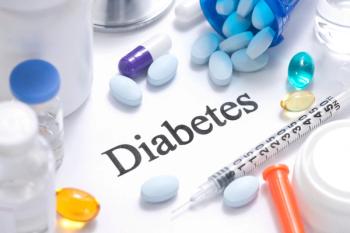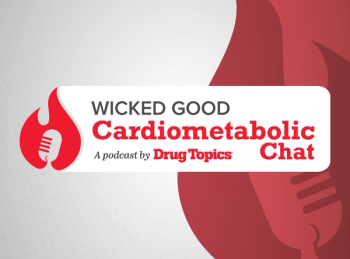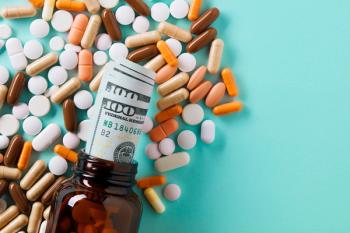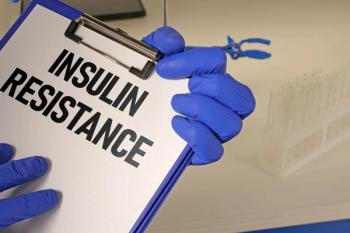
Study Finds Oral Syringes Better for Liquid Pediatric Meds
A randomized controlled study has found that oral syringes are more accurate than dosing cups when parents measure doses of liquid medications for their children.
A randomized controlled study has found that oral syringes are more accurate than dosing cups when parents measure doses of liquid medications for their children. The researchers concluded that oral syringes should be used to help reduce the incidence of medication errors, especially for smaller dosages. They also noted that drug labeling for liquid medications should avoid the use of either teaspoon or tsp as a measurement.
The study was conducted at three pediatric outpatient clinics in New York; Stanford, CA; and Atlanta and was published in the October issue of Pediatrics.1 It compared how accurately parents measured a liquid medication using either of two oral medication syringes (one marked in 0.2 mL increments and one marked in 0.5 mL increments) or a 30-mL dosing cup. The directions on the medication labels used five different types of units--such as mL, mL and teaspoon, mL and tsp, or teaspoon--while the markings on the measuring tool might or might not match the label.
The study randomly assigned 2,110 parents of children up to 8-years old into one of the five study arms. Each parent was presented with nine paired sets of medication labels and tools, and was asked to read the labels and measure out three amounts of a simulated liquid medication, for a total of nine doses measured. The labels called for 2.5, 5, and 7.5 mL amounts of medication. The sets of labels and tools were presented to the parents in random order.
The parents in the study included both English and Spanish speakers and were given their choice of labels and measuring tools marked in English or Spanish. Their health literacy was also assessed.
The main study goal was to determine whether altering the attributes of specific label and dosing tool could reduce liquid dosing errors. The chief criterion was whether the parent measured an amount of medication that was within 20% of the amount called for on the label.
The study found that 84.4% of parents made one or more dosing errors that were 20% greater or smaller than the amount called for. Overdosing was more common than underdosing: 68% of errors were overdoses. Errors were also more common when parents were asked to measure out 2.5 and 7.5 mL than 5 mL.
About 21% of parents made a large measuring error, defined as measuring out more than twice the correct amount of medication.
Parents were more likely to make an error with their first measurements, but then improved their accuracy as they continued. The study arm with the most errors was the group that used labels that called for a teaspoon and a dosing tool labeled with mL and tsp. Parents with lower levels of health literacy had higher odds of making measurement error when they used a dosing cup. Language also played a role: cup versus syringe differences were more prominent for English-speaking parents.
The confusion of the amounts listed on labels and the markings on measuring tools is not a surprise. “In my world, if I were reviewing this for this journal, I would have said it is confirmation of old data,” said Patrick G. Clay, PharmD, CPI, CCTI, FCCP, Science Officer with the American Pharmacists Association. Clay is also Professor of Pharmacy at the University of North Texas System College of Pharmacy in Fort Worth. Several health organizations have been arguing for some time to completely stop using teaspoon and tablespoon measurements in prescription writing, he said--a point also made by the study authors.
However, the high incidence of mistakes is important. “They found that eight of ten of the people in the project made at least one error and one in five made an error that was in excess of two times the correct dose,” he said.
Dosing cups may need to be phased out in favor of oral syringes, said Clay. Pharmacists should also give clear instructions to parents on how to measure when dispensing pediatric liquid medications. Parents should always be advised not to use kitchen spoons for measuring medications. “If you’re trying to measure a half a teaspoon in a metal spoon, good luck with that,” Clay said.
“Not only should pharmacists be giving the instructions, they should be only giving out oral syringes and not dosing cups,” said Clay. Oral syringes should be made inexpensively enough that they can be given out for free. “Just put them out there on the counter for people to walk away with.”
Clay also suggested that markings on oral syringes be enlarged for clearer reading. They should also have markings for only three or four measurements, he added, perhaps 2.5, 5, 7.5, and 10 mL, which would cover the range from the old measurements of a half teaspoon to 2 teaspoons.
Valerie DeBenedette is a medical news writer in Putnam County, N.Y.
Reference
Yin HS, Parker RM, Sanders LM, et al. Liquid medication errors and dosing tools: a randomized controlled experiment. Pediatrics. 2016;138:e20160357.
Newsletter
Pharmacy practice is always changing. Stay ahead of the curve with the Drug Topics newsletter and get the latest drug information, industry trends, and patient care tips.





















































































































































